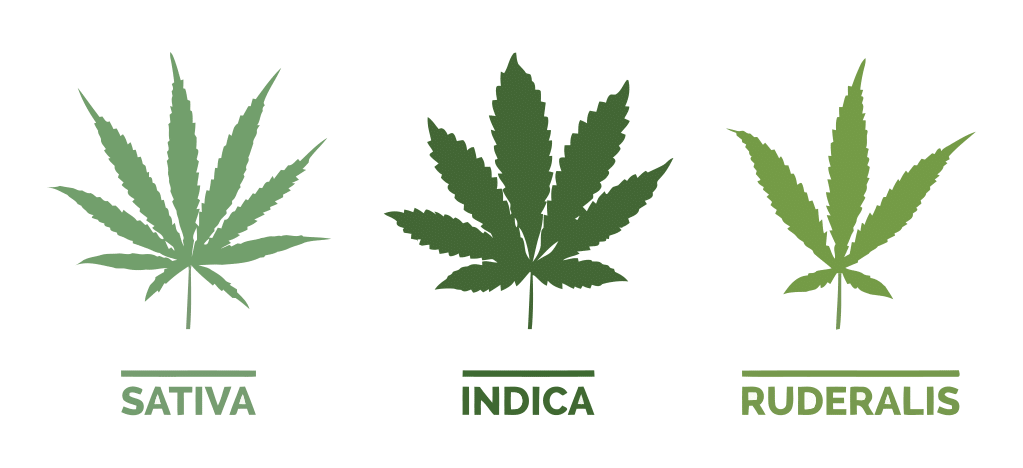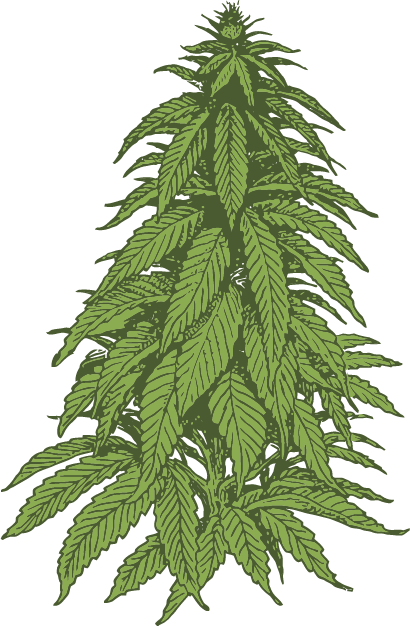HEMP VS MARIJUANA AN EXPLANATION
The difference between hemp vs marijuana is a subject that is all to often improperly explained. As demand for CBD continues to skyrocket, the CBD industry has developed into a unique market that is independent, yet still closely related to the Cannabis industry, including its controversial reputation and shifting legalities. Due to the confusion and complications that this can present for CBD users, it has become increasingly important to understand the difference between hemp and marijuana and how they relate to Cannabis.
What’s the Difference Between Hemp vs Marijuana?

Cannabis is a genus of flowering plants in the Cannabaceae family, which consists of three primary species: Cannabis sativa, Cannabis indica, and Cannabis ruderalis. While hemp and marijuana are regularly referred to as “species” or “strains” of Cannabis, they actually do not qualify as either one. In fact, they couldn’t technically be considered as plants at all… Hemp and marijuana are simply broad classifications of Cannabis that were adopted into our culture; however, they are not legitimate nomenclature for the Cannabis plant. To clarify the difference between Hemp and Marijuana and clear the smoke on this frequently misinformed subject, let’s explore what each of these terms actually means and how they relate to Cannabis.
What is Hemp?

“Hemp” is a term used to classify varieties of Cannabis that contain 0.3% or less THC content (by dry weight). While the legal definition described above had not been legitimized until the Agricultural Act of 2018 had passed, “hemp” has generally been used to describe non-intoxicating Cannabis that is harvested for the industrial use of its derived products. With evidence of its use recorded throughout history, including the discovery of material made from hemp over 10,000 years ago, many believe that hemp was the first crop ever cultivated by mankind. With the capabilities to produce crucial resources such as food, rope, clothing, paper, housing material, and more, hemp has been the catalyst for man’s earliest innovations.
What is Marijuana?

“Marijuana” is a term used to classify varieties of Cannabis that contain more than 0.3% THC (by dry weight) and can induce psychotropic or euphoric effects on the user. While the use of this term is widespread throughout American culture, it presents a grossly inadequate misrepresentation of Cannabis. Most informed individuals and organizations in the Cannabis industry refuse to use the term and some consider it to be “racist.” In early American history, the term “marijuana” was non-existent, and “cannabis” was the primary term used to classify the plant. Between 1910 and 1920, nearly a million Mexicans migrated into the United States seeking refuge from the Mexican Revolution. During this time, anti-Mexican sentiment had begun to steep and the term “marijuana” arose as a negative correlation of its use by Mexican immigrants. Soon after, rumours began to surface, warning Americans of the dangerous and homicidal tendencies caused by using “Mexican cannabis” or “locoweed,” which lead to an even greater rise in anti-Mexican sentiment. As the negative perception of cannabis intensified, the government began regulating cannabis more aggressively. By 1927, 11 states had passed anti-marijuana laws and by the 1930s anti-marijuana propaganda and the fear of “Reefer Madness” was in full swing. After the passing of the Marihuana Tax Act of 1937, which imposed heavy, unrealistic taxes on the possession, sale, and transportation of the plant, the federal government had effectively banned “marijuana,” paving the way for the next 80 years of cannabis prohibition.
The Confusion Presented by Hemp vs Marijuana
Based on the context used to describe Hemp and Marijuana, the defining characteristic between the two is based on a single factor––the amount of THC in the plant––or rather whether it will get the user high. While the intoxicating properties of each plant is an important factor to consider, categorizing Cannabis as either hemp or marijuana based on a single characteristic presents a skewed portrayal of Cannabis which prevents users from fully understanding its diversity. To give you a comparison, consider the taxonomic hierarchy of fruits in the citrus species:

As portrayed in the chart above:
Categorizing Cannabis as either Hemp or Marijuana is akin to classifying all fruits in the citrus genus as either sweet or sour, without acknowledging the diverse characteristics of each fruit. In addition, hemp and marijuana can often appear indistinguishable from one another. This has already led to numerous issues of law enforcement officers making arrests and seizing hemp that is 100% legal because it looks exactly like “marijuana.” The classification of hemp or marijuana absent of a true understanding of Cannabis presents a clear issue of function. The obvious solution is for these words to have never existed; however, now that these terms have become deeply ingrained in our society, this problem will be difficult to reverse. The only realistic solution is to re-educate our society over time. In the meantime, it’s probably best to stay informed about what hemp and marijuana mean and how they are used in our society and legal system to know your rights and avoid any complications when using hemp or CBD products.
4 Key Differences Between Hemp and Marijuana

As varieties of the same plant species, hemp and marijuana share many similarities and can even appear exactly alike. With contrasting legal regulations and very different effects and usages, you definitely do not want to get these two confused. To understand just how different these two are, consider these 4 key differences between hemp and marijuana.
1. Hemp vs Marijuana: Composition
The defining characteristic between hemp and marijuana is the chemical composition contained within each plant. Both hemp and marijuana can produce high amounts of CBD, the non-intoxicating cannabis compound; however, THC is produced at very different levels. While hemp can contain no more than 0.3% THC by dry weight, marijuana can contain up to 30% THC content.

2. Hemp vs Marijuana: Legality
Due to the difference between their levels of THC, hemp and marijuana are regulated very differently under the law. While hemp was previously regulated as an illegal substance under the Controlled Substance Act of 1970, it was removed as an illegal substance under the Agricultural Improvement Act of 2018, which federally legalized hemp and hemp-derived products that contain no more than 0.3% THC. Marijuana, on the other hand, is still treated as a controlled substance and is federally illegal under the Controlled Substance Act.
3. Hemp vs Marijuana: Cultivation
Hemp and marijuana are harvested for different purposes so, naturally, they require different growing conditions. Marijuana varieties are selectively bred in controlled environments which are designed to optimize the breed’s characteristics and produce female plants that yield budding flowers. To properly cultivate a marijuana or cannabis plant, a grower must pay close attention to the plant at each stage of its life cycle and maintain exact conditions in its environment, such as proper temperature, lighting, and humidity. In contrast, hemp is grown to maximize its size and yield. To achieve this, hemp is typically grown outdoors and does not require the level of control and attention that is necessary to grow marijuana.
4. Hemp vs Marijuana: Usage
Hemp and marijuana each offer a range of usages which are unique to their composition. As a powerful psychoactive agent, THC can directly bind to the CB1 and CB2 receptors in the Endocannabinoid System, which induces the mind-altering, euphoric effects referred to as being “high.” While marijuana is commonly recognized for its recreational uses, studies have revealed its potential in a wide variety of therapeutic applications.
In comparison, hemp is harvested to produce a wide variety of products including, but not limited to:
- Industrial products such as paper, clothing, building materials, and plastic
- Food products such as cooking oil, hemp flour, and hemp seed-based products
- Medicinal products such as Cannabidiol (CBD), which is then used to produce a variety of items including CBD vape juice, CB,CBD tinctures, CBD topicals, and other CBD-infused products.
Important Notice: Please note that this article is republished from the website CBDOrigin.com. For the latest and most current version of this article and more helpful information here: https://cbdorigin.com/hemp-vs-marijuana

